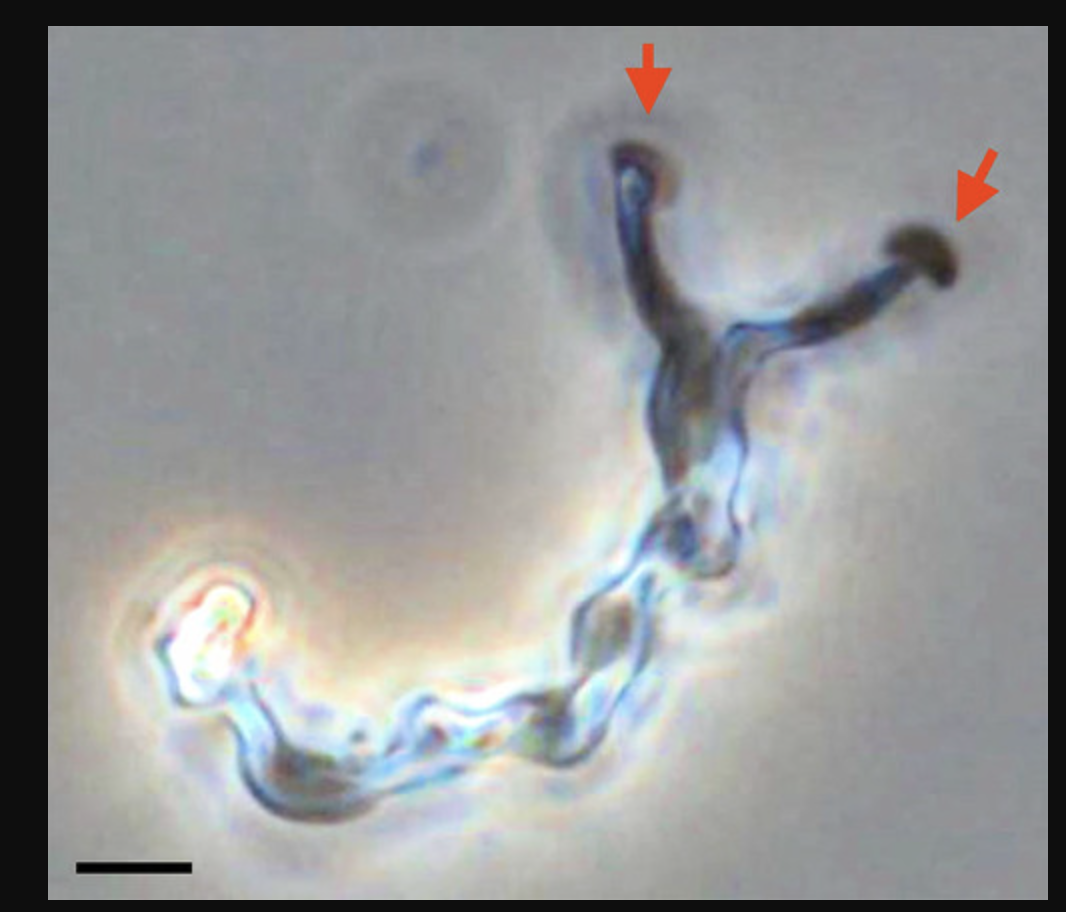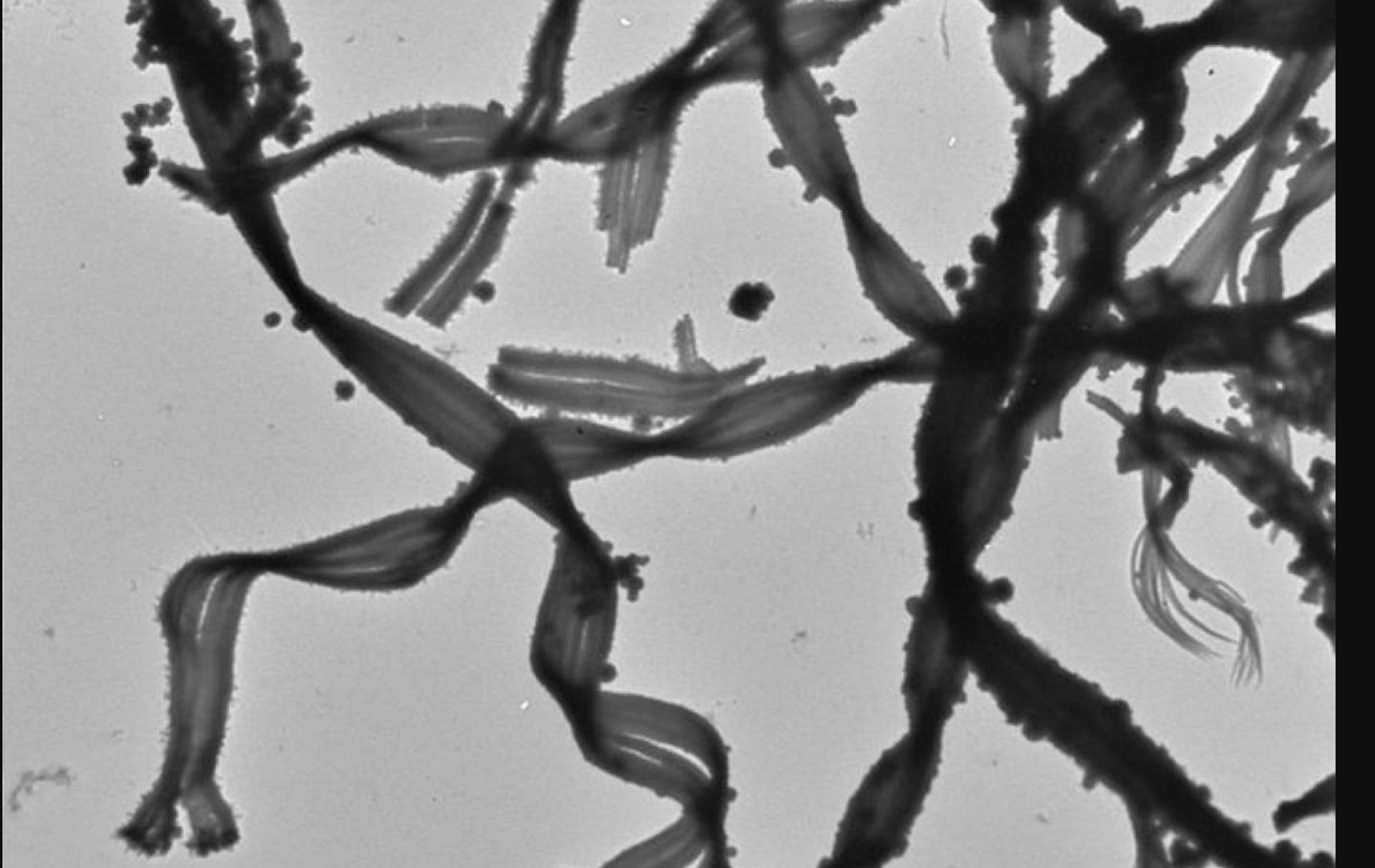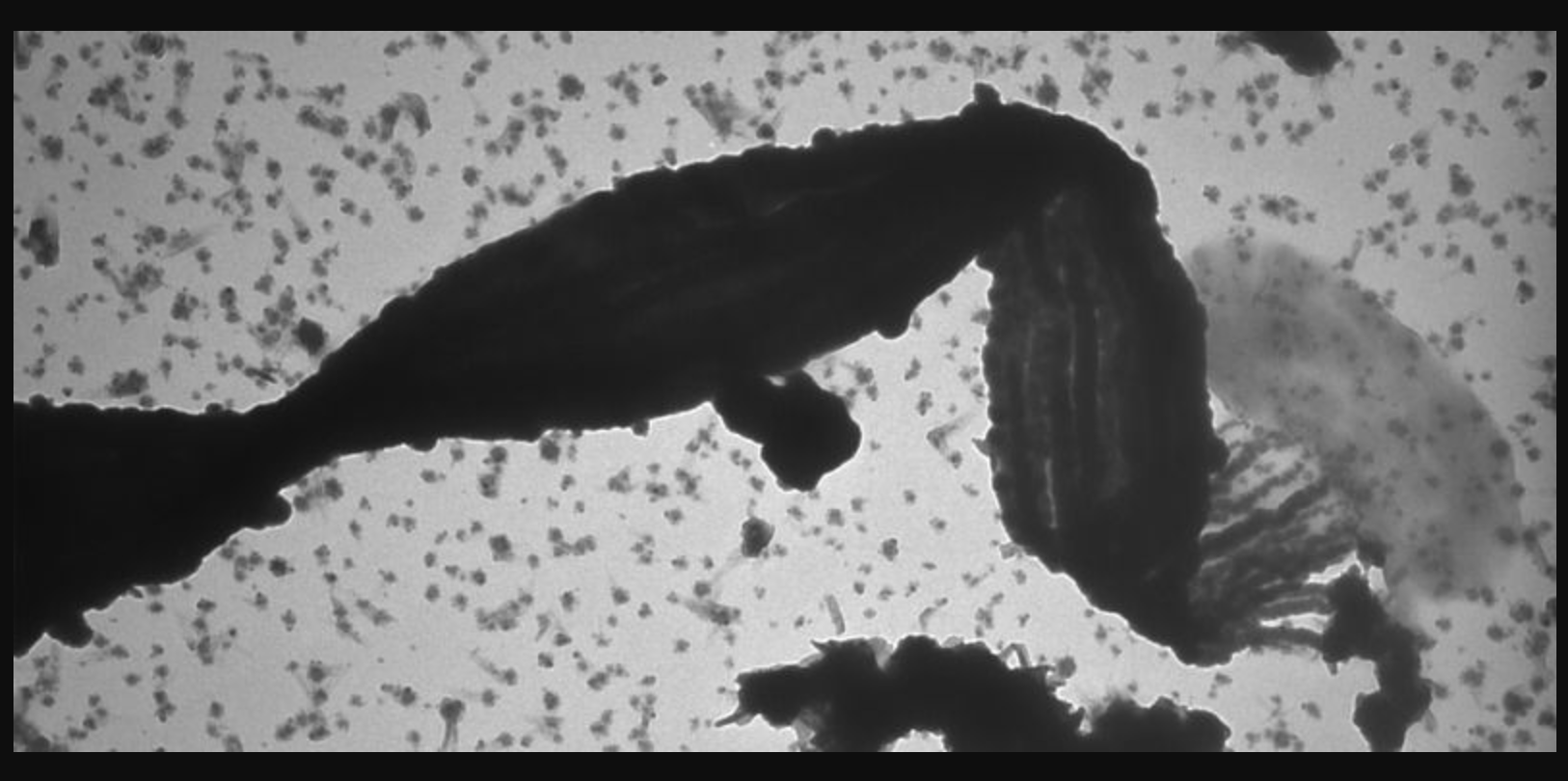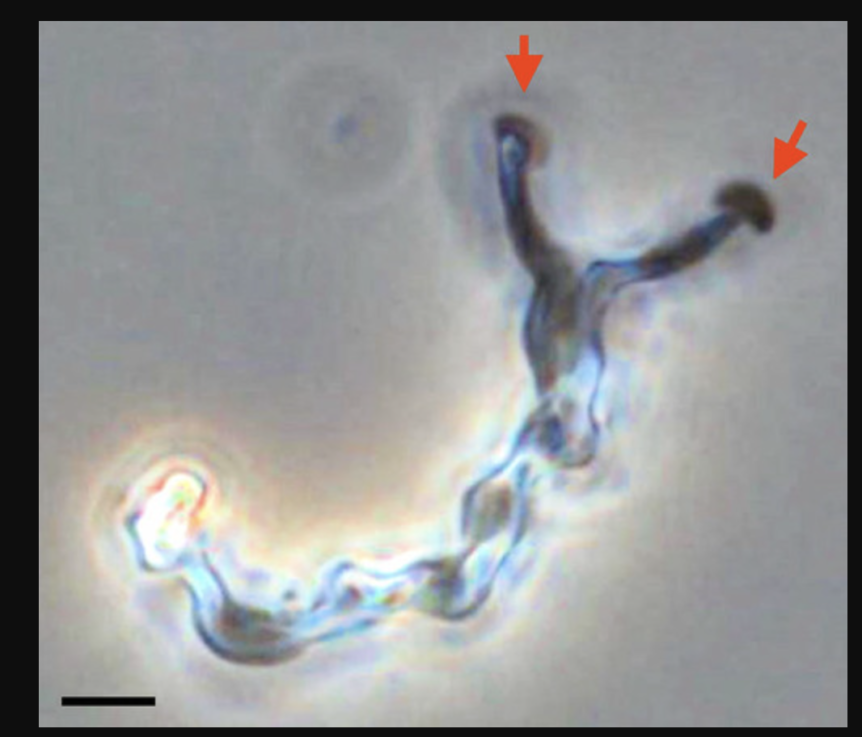
Haiku for M. Ferrooxydans
Electron Breather,
Rust Maker,
Elegant Skeins
Promise biofuel.
by Dr. JeM YinJoy
How to pronounce Mariprofundus ferrooxydans.
Mariprofundus ferrooxydans (Mary-pro-fun-duhs Fero-oxy-dans).

The Spiritual Significance
If M. ferrooxydans were part of a secret society, its nick-name would probably be “Rusty” because rust is what M. ferrooxydans leaves in its wake.
And if she were a villain in a James Bond film, her moniker would be “Iron Maiden” because she’d render enemies helpless by encasing them completely in iron.
Instead of feeding on organic carbon like its other cohorts, M. ferrooxydans grabs carbon dioxide, out of the surrounding water. Yes, M. ferrooxydans is an oceanic microbe, living far enough away from hydrothermal vents to avoid the heat, but close enough to find great sources of reduced iron, its main source of sustenance.
M. ferrooxydans is also drawn to wrecked ships and foundations that hold up docks and piers – anywhere that iron wrought human creations have ended up on the bottom of the sea floor, that is where M. ferrooxydans flourishes.
M. ferrooxydans also copies the dual stage lifecycle of its multicellular cohabitants, those oceanic dwellers that have both a sessile and motile phase, such as sponges and jelly fish.
Y-shaped in its cell division, the “y” is tipped on each prong of the two tined fork with a new daughter cell, whereas the parent is left at the tip, and the stalk is evenly divided between the two new cells.
The stalk is used by the bacterium to store the bi-products of its feeding habits, iron oxides.
If the bacterium did not have a way to store these bi-products, then it would simply imprison itself in an iron-clad cage.
Their odd management of their waste brings up a salient question – why doesn’t M. ferrooxydans just deposit the oxides somewhere in its environment instead of braiding them off its body? To answer that, let us remember this. Microbes do lead their lives by the mantra: “waste not want not.” Most likely M. ferrooxydans uses some of the stored up oxides for later use.
Turns out M. ferrooxydans doesn’t even need iron as food to grow and can live purely off the electrons produced from a source of electricity, with carbon dioxide as its source of carbon. M. ferrooxydans basically lives off of “stone” soup and in this way is a teacher and guide for keeping things simple, in what you eat and what you need to survive.


JY
The Microbiology
Mariprofundus ferrooxydans is a marine iron-oxidizing bacteria and is the sole member of the Zetaproteobacteria class.
Shape and Size
M. ferrooxydans are curved-shaped bacteria (approximately 0.5×2–5 µm), they are motile, and they stain gram negative. They have an alternate form for growth in which they exude organic stalks that are used to excrete iron oxides, the products of their iron oxidation metabolism to curb the build-up of the oxides.
During cell growth, Mariprofundus ferrooxydans use that stalks for excretion and also for extracellular storage of oxidized iron.
The stalks are woven together upon excretion from the cell, and the “skeins” are made up of iron oxyhydroxides and carboxyl-rich polysaccharides. The stalks help the cell grow on iron and keep the cell from imprisoning itself in a case of solid iron minerals, because the stalks help to store the products mineral growth externally from the cell itself.
Habitat
M. ferrooxydans was first discovered at the hydrothermal vents at Loihi Seamount, Hawaii, where the temperature is moderate, there is plenty of iron available and microbial mats with iron oxides spread out and about from the vents.
The conditions that M. ferrooxydans requires for growth and iron oxidation are found in several oceanic habitats. One of these habitats is located near a hydrothermal vent, at a distance where the heated iron-rich vent fluids are dissipated into the sea water. Here, iron oxidizing bacteria, such as M. ferrooxydans, form iron-oxide microbial mats on the sea floor. These microbial mats are covered with iron oxides (rust) excreted by the cells.
M. ferrooxydans can also be found in habitats where Fe(II) leaching occurs from underwater volcanic rocks, which makes it possible for iron-oxidizing bacteria to form biofilms on the rocks.
The conditions that M. ferrooxydans requires for growth and iron oxidation are found in several oceanic habitats. One of these habitats is located near a hydrothermal vent, at a distance where the heated iron-rich vent fluids are dissipated into the sea water. Here, iron oxidizing bacteria, such as M. ferrooxydans, form iron-oxide microbial mats on the sea floor. These microbial mats are covered with iron oxides (rust) excreted by the cells.
M. ferrooxydans can also be found in habitats where Fe(II) leaching occurs from underwater volcanic rocks, which makes it possible for iron-oxidizing bacteria to form biofilms on the rocks.
M. ferrooxydans is notorious for causing the biocorrosion or rusting of ships, bridges, and other undersea structures that are made mostly of iron.









